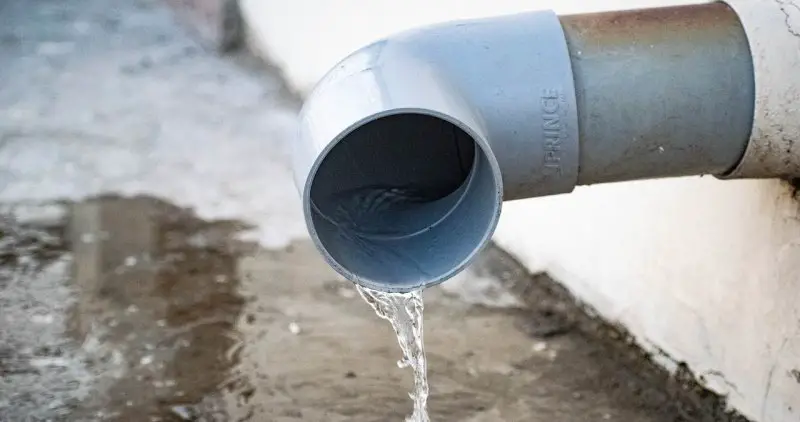
HDPE is High Density Polyethylene plastic, which is an industrial grade plastic that is extremely versatile and popular in projects such as underground pipe construction.
PVC is also very popular, and it is an acronym for polyvinyl chloride.
HDPE is softer and bends more easily, which makes it suitable for situations that use lower pressure and have tighter bends, whereas PVC is a stronger and stiffer material.
It is useful to understand the similarities and differences of these materials so that you can choose the one that is ideal for your project.
What Are Thermoplastics Used for?
Thermoplastics are recyclable because they can be molded and melted over and over again to make new products.
They are used to make many different items, including containers, fuel tanks, furniture, cable insulators, bottles, toys, piping systems, and more.
Thermoplastics are classified as either amorphous or semi-crystalline, and HDPE is semi-crystalline, while PVC is amorphous.
They are strong and durable, and they have many uses in the modern world.
Similarities Between PVC and HDPE
PVC and HDPE are both very strong and durable, and they are used to make similar products.
Both products are lightweight, corrosion-proof, and resistant to bacteriological and chemical buildup.
They are both thermoplastics, but they are best suited for different applications due to their differences.
You need to understand their differences to know which material is ideal for your project.
Differences Between PVC and HDPE
1. What They Are Made of
Although both are thermoplastics, PVC is an inexpensive and durable vinyl polymer, while HDPE is a polyethylene thermoplastic that is made from petroleum.
2. Durability
Both materials are strong and can handle high temperatures, but HDPE is more durable and will stand up to very high temperatures more frequently.
3. Thermal Performance
These materials can be exposed to very hot or cold weather, which can lead to the material expanding.
HDPE is known to expand approximately four times more than PVC.
4. Installation
It is much easier and quicker to install PVC because it doesn’t require any specific machinery or equipment and it can be installed in any type of weather.
HDPE is more complex and you need a trained operator and special equipment because it has much larger diameters that need to be fused together; it is also very expensive.
5. What They Are Used for
HDPE is used for many different applications, including the distribution of petroleum, chemicals, and natural gas, as well as water and storm systems.
PVS is often used for irrigation systems, sewer systems, drains, and other similar applications.
6. Popularity
PVC is the third most widely used thermoplastic, while HDPE’s main product, polyethylene, is the number one most widely used thermoplastic.
7. Qualities
PVC is amorphous, and it is heavier and stronger than HDPE; it is not able to absorb shock waves that can occur in surges.
On the other hand, HDPE is semi-crystalline, and it is harder, more abrasive, and is more resistant to heat than PVC; in addition, it is able to dampen and absorb shock waves and is suitable for lower pressure installations.
What Is PVC?
PVC is polyvinyl chloride, it is an economical and versatile thermoplastic that is used in a number of applications.
It is used in a number of different industries, including building and construction, automobile, electronics, health care, and more.
It is often used to produce different products, such as blood bags and tubing, windshield wiper systems for automobiles, piping, siding, wire and cable insulation, and more.
One benefit of PVC is that it is very thin and flexible, and at the same time, it is strong and durable.
Nearly three quarters of all PVC that is produced is used in building and construction applications, and it has the benefit of being a green solution because it gives off low greenhouse gases and can be recycled.
Its strength and resistance to water damage make it an ideal solution for many functions, including roofing, cladding, windows, decking, fencing, flooring, wallcoverings, and more.
PVC is easy to clean and does not corrode, so it is a low maintenance material that is durable and holds up over time.
What Is HDPE?
HDPE is a thermoplastic polymer that is made from petroleum and has a wide range of applications due to its versatile nature.
It is used for many different applications related to food because it is FDA and USDA compliant, and it has applications in construction, health care, and many other areas.
It is easy to melt and mold, and it has a high melting point that allows it to remain rigid until it reaches very high temperatures.
In spite of this, once it reaches the melting point, it becomes soft and can be molded quickly and easily.
In addition, HDPE is able to resist corrosion, mold, mildew, and other rotting; it can also handle strong bases and acids and can handle boiling for the purpose of sterilization.
HDPE is a strong and versatile material that is commonly used in a variety of applications because it is cost effective and environmentally friendly in addition to its strength and versatility.
Which to Use: HDPE or PVC
There are times when you have a choice between these two materials for your project, and you need to understand the similarities and differences so that you can make the right choice.
For example, HDPE is often used in golf course irrigation systems because it is more versatile and can use different resins.
Although experts say that one material isn’t necessarily better than the other, you should look at your project and examine the full specs of what material will work best for you.
PVC vs. HDPE for Drainage Pipe
PVC is generally the superior thermoplastic to use for a drainage pipe.
Due to its flexibility, HDPE is generally less recommended for drainage pipes, as it requires more consideration during installation to account for its expansion and contraction.
HDPE or PVC for Fireworks
For fireworks, specifically mortar tubes for launching fireworks, HDPE is far superior to PVC.
PVC should never be used as a mortar tube for fireworks as it is brittle and prone to shattering, as demonstrated in this video.
Final Words
HDPE and PVC are thermoplastics that are strong and durable, and they are used in a number of different applications.
Although they have some similarities, they have a host of differences that will help you choose which one is ideal for your project.
Look at the scope of your project to help you determine which one you need.
